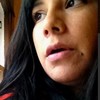
First Nation people in northwestern Ontario are living on the bulk of what the province deems 'high-priority' contaminated sites. Everything from petroleum to what is commonly referred as ‘BTEX’—a group of compounds known to cause severe human health effects have contaminated land in Canada’s most populated province. According to the Treasury Board’s federal contaminated site inventory, of the 148 sites rated as high-priority for action in the province, 134 are in northwestern Ontario.
Advertisement
Advertisement
